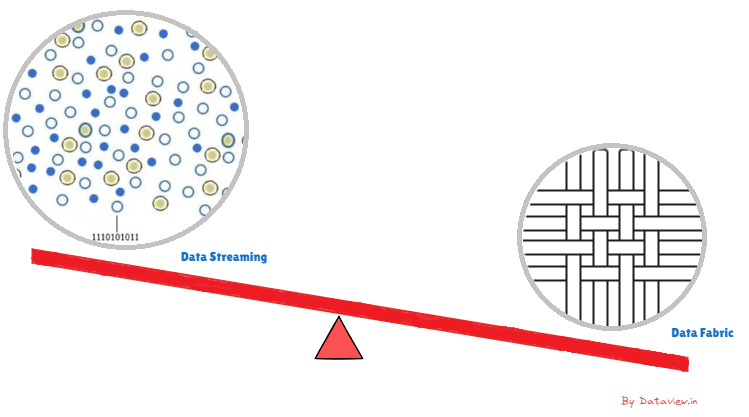Revolutionize Stream Processing With Data Fabric
An open-source distributed event-streaming platform like Apache Kafka supports data fabric by handling real-time data streaming across various systems.
Join the DZone community and get the full member experience.
Join For FreeA data fabric is a system that links and arranges data from many sources so that it is simple to locate, utilize, and distribute. It connects everything like a network, guaranteeing that our data is constantly available, safe, and prepared for use. Assume that our data is spread across several "containers" (such as databases, cloud storage, or applications). A data fabric acts like a network of roads and pathways that connects all these containers so we can get what we need quickly, no matter where it is.
On the other hand, stream processing is a method of managing data as it comes in, such as monitoring sensor updates or evaluating a live video feed. It processes data instantaneously rather than waiting to gather all of it, which enables prompt decision-making and insights.
In this article, we explore how leveraging data fabric can supercharge stream processing by offering a unified, intelligent solution to manage, process, and analyze real-time data streams effectively.

Access to Streaming Data in One Place
Streaming data comes from many sources like IoT devices, social media, logs, or transactions, which can be a major challenge to manage. Data fabric plays an important role by connecting these sources and providing a single platform to access data, regardless of its origin. An open-source distributed event-streaming platform like Apache Kafka supports data fabric by handling real-time data streaming across various systems. It also acts as a backbone for data pipelines, enabling smooth data movement between different components of the data fabric.
Several commercial platforms, such as Cloudera Data Platform (CDP), Microsoft Azure Data Factory, and Google Cloud Dataplex, are designed for end-to-end data integration and management. These platforms also offer additional features, such as data governance and machine learning capabilities.
Real-Time Data Integration
Streaming data often needs to be combined with historical data or data from other streams to gain meaningful insights. Data fabric integrates real-time streams with existing data in a seamless and scalable way, providing a complete picture instantly. Commercial platforms like Informatica Intelligent Data Management Cloud (IDMC) simplify complex data environments with scalable and automated data integration. They also enable the integration and management of data across diverse environments.
Intelligent Processing
When working with streamed data, it often arrives unstructured and raw, which reduces its initial usefulness. To make it actionable, it must undergo specific processing steps such as filtering, aggregating, or enriching. Streaming data often contains noise or irrelevant details that don’t serve the intended purpose. Filtering involves selecting only the relevant data from the stream and discarding unnecessary information. Similarly, aggregating combines multiple data points into a single summary value, which helps reduce the volume of data while retaining essential insights.
Additionally, enriching adds extra information to the streamed data, making it more meaningful and useful. Data fabric plays an important role here by applying built-in intelligence (like AI/ML algorithms) to process streams on the fly, identifying patterns, anomalies, or trends in real time.
Consistent Governance
It is difficult to manage security, privacy, and data quality for streaming data because of the constant flow of data from various sources, frequently at fast speeds and in enormous volumes. Sensitive data, such as financial or personal information, may be included in streaming data; these must be safeguarded instantly without affecting functionality. Because streaming data is unstructured or semi-structured, it might be difficult to validate and clean, which could result in quality problems. By offering a common framework for managing data regulations, access restrictions, and quality standards across various and dispersed contexts, data fabric contributes to consistent governance in stream processing.
As streaming data moves through the system, it ensures compliance with security and privacy laws like the CCPA and GDPR by enforcing governance rules in real time. Data fabric uses cognitive techniques, such as AI/ML, to monitor compliance, identify anomalies, and automate data classification. Additionally, it incorporates metadata management to give streaming data a clear context and lineage, assisting companies in tracking its usage, changes, and source. Data fabric guarantees that data is safe, consistent, and dependable even in intricate and dynamic processing settings by centralizing governance controls and implementing them uniformly across all data streams. The commercial Google Cloud Dataplex can be used as a data fabric tool for organizing and governing data across a distributed environment.
Scalable Analytics
By offering a uniform and adaptable architecture that smoothly integrates and processes data from many sources in real time, data fabric allows scalable analytics in stream processing. Through the use of distributed computing and elastic scaling, which dynamically modifies resources in response to demand, it enables enterprises to effectively manage massive volumes of streaming data. By adding historical and contextual information to streaming data, data fabric also improves analytics by allowing for deeper insights without requiring data duplication or movement. In order to ensure fast and actionable insights, data fabric's advanced AI and machine learning capabilities assist in instantly identifying patterns, trends, and irregularities.
Conclusion
In conclusion, a data fabric facilitates the smooth and effective management of real-time data streams, enabling organizations to make quick and informed decisions. For example, in a smart city, data streams from traffic sensors, weather stations, and public transport can be integrated in real time using a data fabric. It can process and analyze traffic patterns alongside weather conditions, providing actionable insights to traffic management systems or commuters, such as suggesting alternative routes to avoid congestion.
Published at DZone with permission of Gautam Goswami, DZone MVB. See the original article here.
Opinions expressed by DZone contributors are their own.

Comments